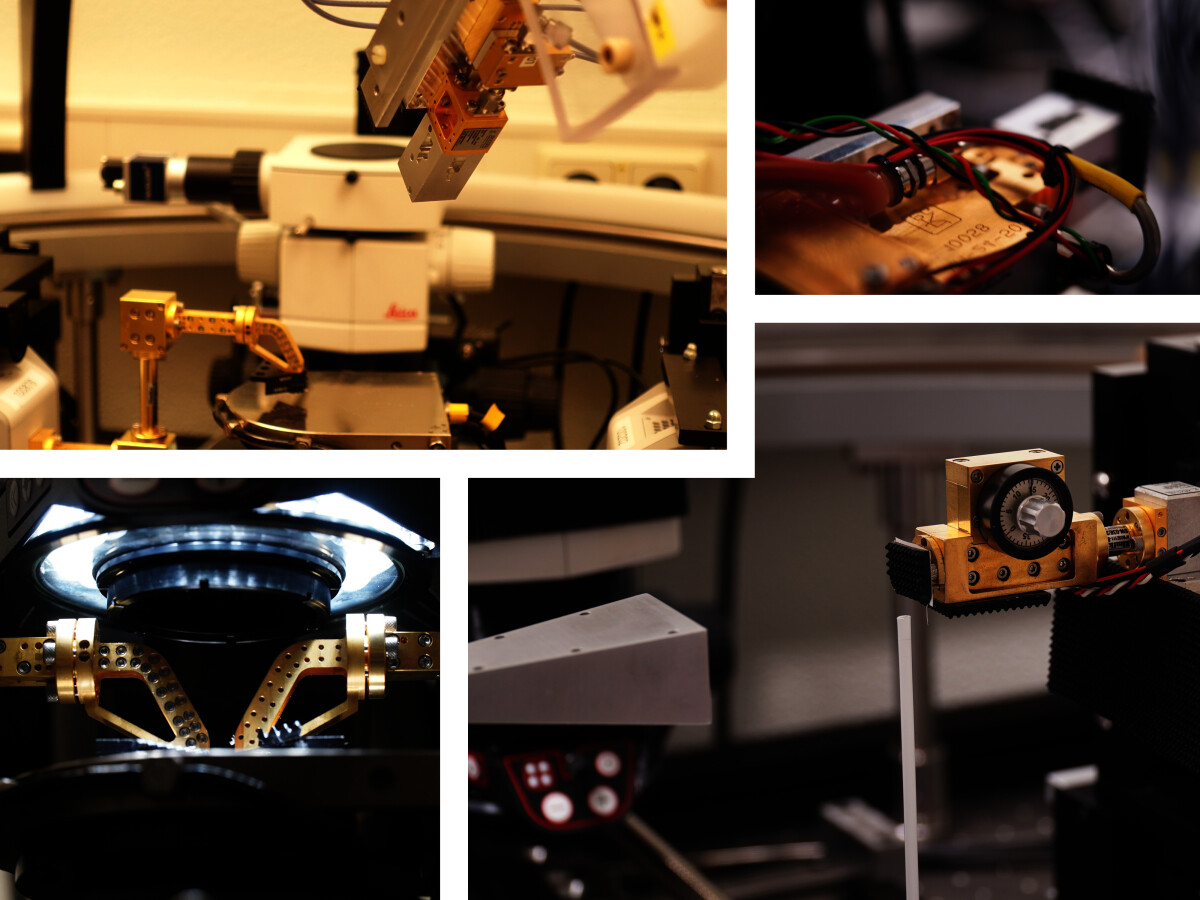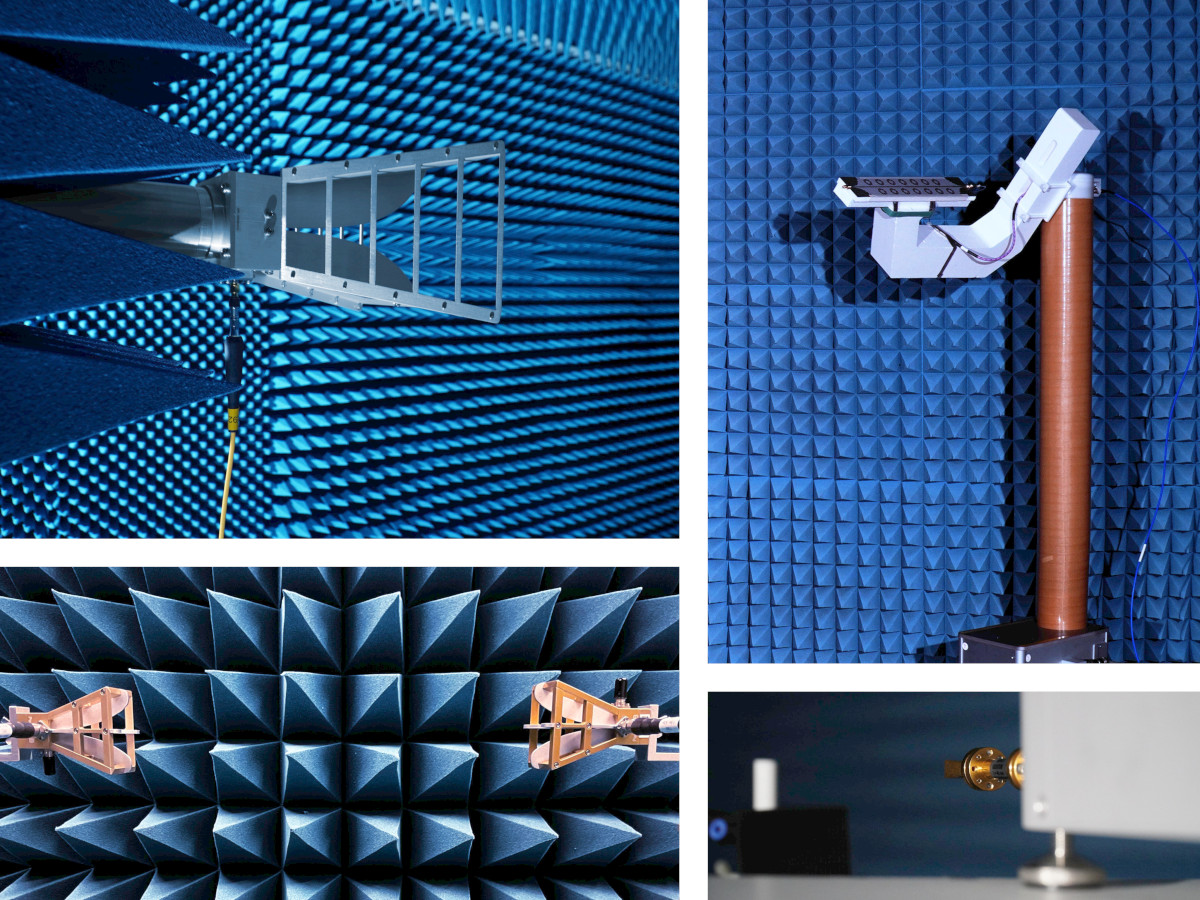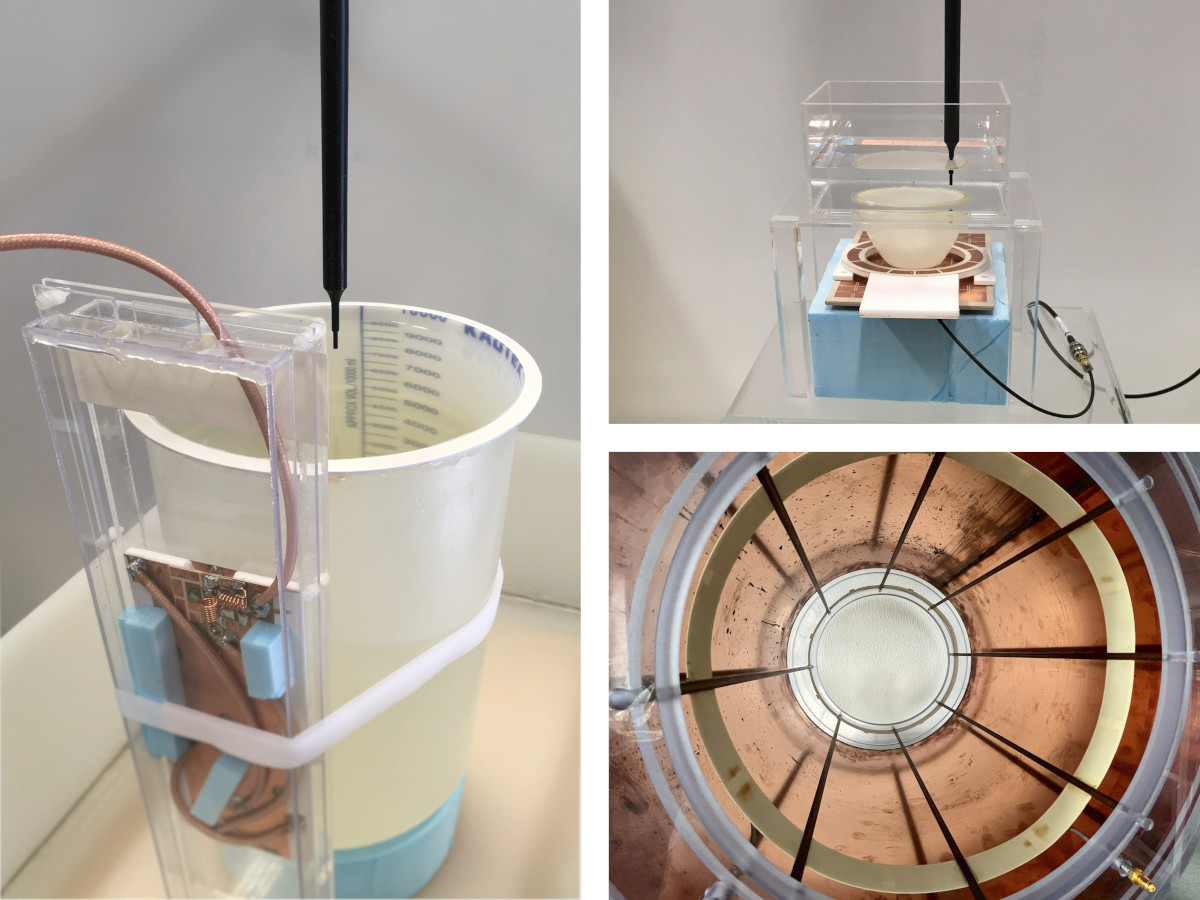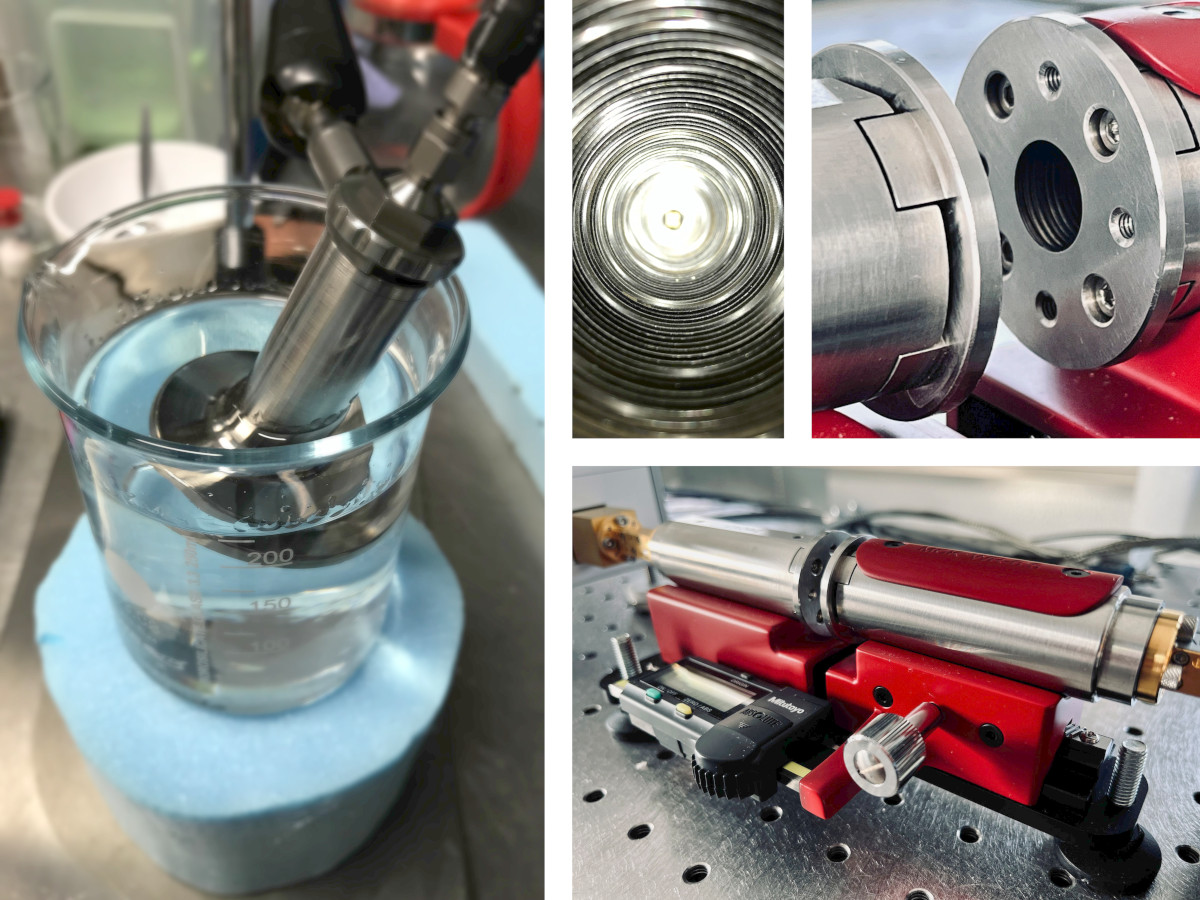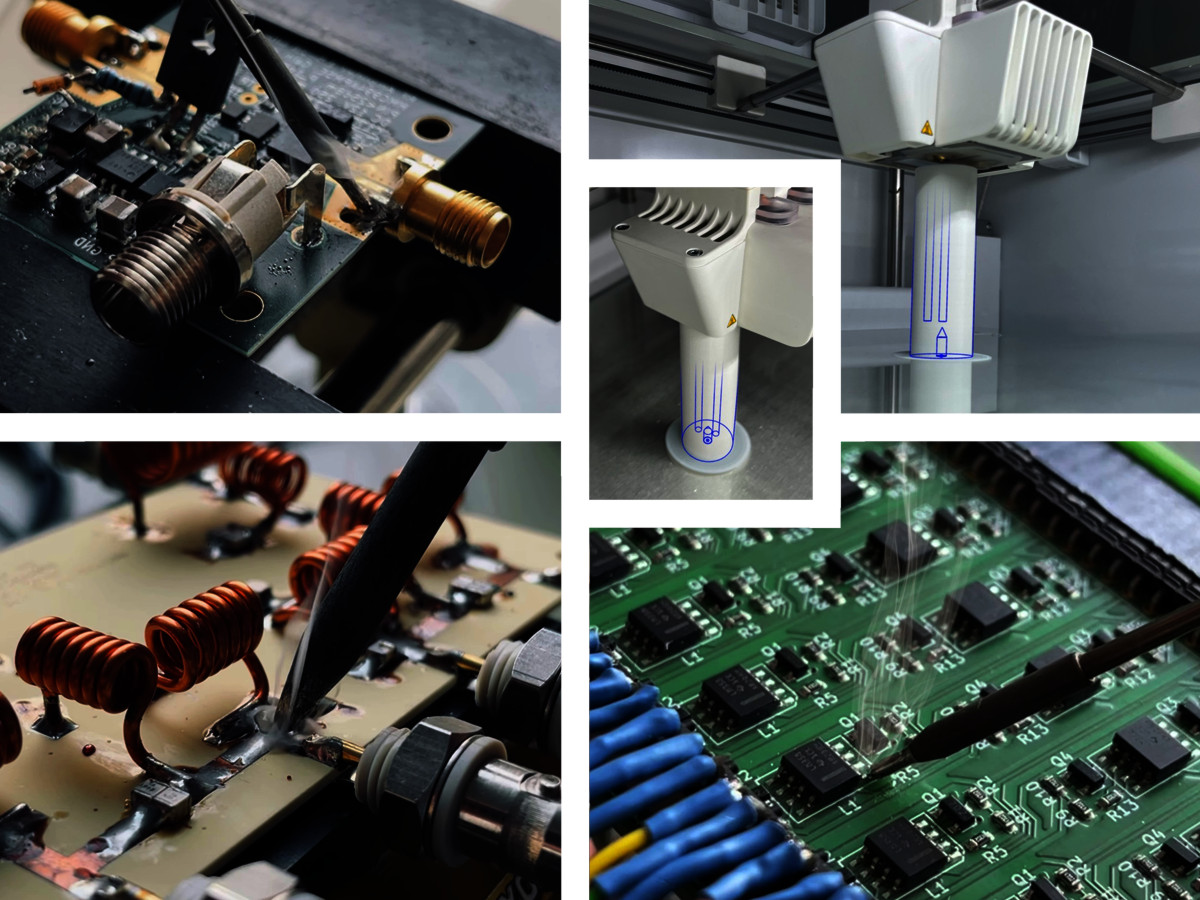Equipment
Chip Antenna Measuring Station
With this measuring station we can measure far-fields and near-fields of on-chip antennas and other measurement setups in the mm-wave range (or 75GHz - 1 THz). The high frequency bands are accessed via frequency extenders and with appropriate lightweight RX extenders, which can be moved in a spherical positioning system (from DEMCON Systec industrial systems), the antenna radiation characteristics can be measured. By using measuring tips for coplanar lines, multi-port measurements can also be performed. The measuring tips as well as the microscope are each 3-axis, cartesian movable.
The time-lapse video shows a measurement scenario of an antenna characterization:
Anechoic Chamber with Antenna Measurement System
In our anechoic chamber for frequencies above 900 MHz, we can measure 3D radiation characteristics of antennas. Using the ZNA43 from Rohde & Schwarz, this can be done in the frequency range up to 43 Ghz. For higher frequencies, frequency extenders can be utilized. The antenna to be measured is mounted on a two-axis (elevation and azimuth) swiveling foam arm, which has approximate properties of air. Various horn antennas are available as reference antennas.
For mobile measurements two small network analyzers are available: Anritsu Shokline MS46122B 8 GHz and Rohde & Schwarz ZNL6 6 GHz.
Near-Field Measuring Station in the MHz Range
In order to measure near fields of antennas, e.g. for magnetic resonance imaging (MRI), we have a measuring station with a Cartesian positioning system from DEMCON Systec. The samples that can be moved with this positioning system are from Speag. With them we can measure electric and magnetic field as well as temperatures pointwise. The associated easy4MRI measuring device from Speag takes into account the material properties of the phantom liquid that may be used, which mimics the electromagnetic properties of the human body.
Buttler matrices, power splitters and an 8-channel vector modulator bank are available for multi-channel measurements.
Electromagnetic Material Characterization
For the electromagnetic material characterization of substrates and liquids (in a broader sense also gels) we have two systems at our disposal. On the one hand, the DAK-12 system in the frequency range 4 MHz to 3 GHz. On the other hand, two MCK systems from Swiss-to-12 for the waveguide bands WR06 and WR28.
Workshops and Manufacturing Systems
Soldering and electronics workshop
- Voltera platinum printer and CCD circuit board plotter from Bungard
- Modern soldering and rework station suitable for fine work on high frequency circuits
- 6 circuit design and soldering workstations for workshops
Additive and subtractive manufacturing
- 3D printer Ultimaker S5 with material station
- 5-axis CNC milling machine from Penta
Software and Hardware for EM Simulations
Software
- 3D FDTD: EMPIRE XPU / Sim4Life / OpenEMS (own development, open-source) / MEEP (open-source)
- 3D MoM: ADS Momentum / FEKO
- 3D FEM: COMSOL Multiphysics / Ansys Electronic Desktop / Sim4Life
- 2D/3D FD: Highly efficient electrostatic simulators (in-house developments)
- Microwave Circuit Simulation: PathWave ADS
Hardware
- Over 17 simulation servers equipped for complex and diverse simulation tasks. Depending on the task, the servers are equipped with modern CPUs (like AMD Ryzen Threadripper Pro 3995 WX), memory up to 512GB, and four Tesla P100 GPUs.
- A PC lab with 10 high-performance desktop PCs is available for teaching purposes.
- A workstation pool of about 15 high-performance workstation computers can be accessed for projects and theses.

